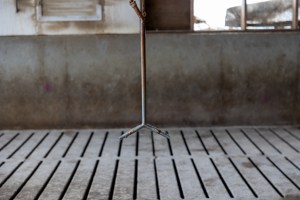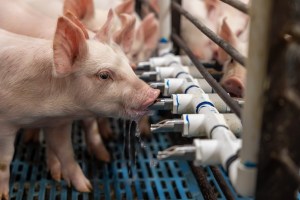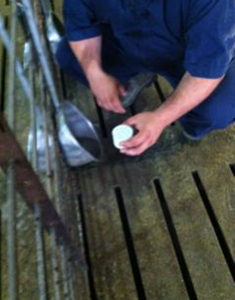Have you overlooked the most critical nutrient?
Water is the most critical nutrient to sustain life and plays a vital role in most biological functions across all phases of production. It is the largest single component of body composition and represents between 50-80% of body content, depending on pig production stage. There are four key drivers behind pig water intake:
- Drinker availability
- Drinker position and design
- Water flow
- Water quality

Pig water drinker availability
PIC recommends a ratio of 10 – 12 pigs per water source for nursery pigs (up to 60 pounds) and grow-finish pigs (60 pounds to market).
Transitioning to a new barn at weaning can cause dehydration in piglets due to stress and an unfamiliar environment. It has been shown that it can take about 35 hours for 85% of pigs to consistently find water. The 15% that are unable to find water by that time will likely become your day 2 and 3 pulls.
Water dripping slowly from cups or nipples can help pigs locate the water source and begin drinking. Consider adjusting drinkers to allow a slow drip for 6 hours.
Adding extra water sources the first few days after placement can also encourage pig water intake. Try placing water in gruel pans upon entry or even placing some water in feeder pans if it does not affect feed flow or access.
In high-stocking-density situations, consider adding extra water sources, such as swinging nipples, gate-mounted nipples or water bars.
Pig water nipple position and design

Drinker position plays a role in pig water consumption, water waste and overall animal welfare. Drinkers at improper positions and heights might increase water waste. Drinkers with nipples at a 90-degree angle should be set equal to shoulder height of the smallest pig in the pen.
Drinkers with nipples at a 60-degree angle should be set 2-3 inches above shoulder height of the smallest pig in the pen. If using bowl waterers, the lip of the bowl should be 40% of the height of the smallest pig. Bowl drinkers should be placed near feeders, and nipple drinkers should be placed in a wet area of the pen. For both styles of drinkers, allow ample space for pigs to access them.
Regardless of drinker type, be sure to adjust water source height regularly to maximize water intake. Bowl water sources placed too low are more likely to get littered with fecal material.
Water flow in pig barns

Water flow may be one of the most critical but often overlooked steps to managing water access. Ideally, flow rate should be 500 mL per minute for nursery pigs and 1 L per minute for grow-finish pigs. One simple way to measure flow rate is by using the cap from a can of spray paint. Nursery pig drinkers should fill the lid in 12 seconds. Drinkers for grow-finish pigs should fill the lid in 6 seconds. Drinkers at the sow farm should fill the paint can lid in 3 – 4 seconds.
Between groups, ensure all nipples and bowls are flowing properly. Audit water flow rate in 10% of drinkers on a weekly basis. Rotate the drinkers being checked to ensure all get checked periodically. Closely monitor flow rate during the nursery stage; if pressure is too high (>1 L/min), it might limit pig water intake, increase water waste or increase humidity in the barn.
If cool cells, misters or sprinklers are used in warmer months, be sure to maintain proper flow rate during peak usage. This also applies during pig pen washing times.
Water quality to support pig performance
Water quality can vary based on regions, water source and pH. Pigs have been shown to be reasonably resilient if the water quality is consistent from the sow farm to the nursery and on to the finisher. The table below shows the recommended maximum levels of different elements and minerals in water. Pig performance might be affected if concentration levels are exceeded.

For more information regarding PIC’s recommendations on water quality, listen to The Squeal episode 0019: Nutrient Access and Availability.
Dirty water lines or biofilm build-up can have a negative impact on water quality and flow rate. Check and clean water lines two times per year to remove the presence of any buildup or biofilm. Usually, a peroxide or citric acid-based product works best, but this depends on the water parameters in your barn. Not only do you need to flush the main line, but you might also need to remove water nipples if they become clogged. Dirty water lines can reduce water flow by up to 30%.
All the information above can be found in PIC’s Wean-to-Finish Guidelines or the GrowQuest tool. For more information, contact your PIC Technical Services representative.





